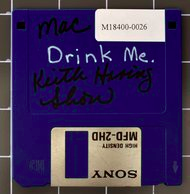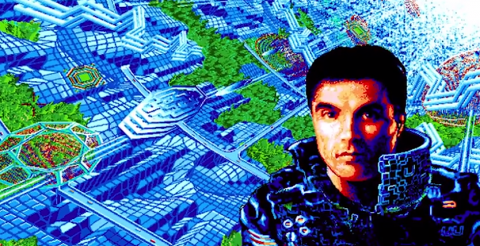Few science fiction novels have resonated as strongly with popular culture as William Gibson’s Neuromancer (1984). The book, wherein the first trickles of Internet culture coalesced into the gritty film noir world so dear to readers of Philip K. Dick, became one of the seminal reads of the 1980s. The cyberpunk genre was born.
Since its appearance, Gibson’s work has continuously echoed in popular culture. While movies have tried to distill his impending, tech-filled dystopianism, the most appropriate, if not the most striking tributes, have come in the form of video games. From 1993’s Shadowrun, to the somber mix of conspiracy and technology of the Deus Ex trilogy, video games were inherently suited to the visual portrayal of cyberpunk. The most ambitious of these was spearheaded by one of counterculture’s most prominent proponents: Dr. Timothy Leary.
Leary is best known as the psychologist who championed LSD and psilocybin use, engaging in meticulous research—both personal and professional—of their effects. By the 1980s, the same Leary who had popularized the phrase “turn on, tune in, drop out” was now proselytizing computer use with the phrase “turn on, boot up, jack in.” To those who doubted his about-face, Leary declared, “the PC is the LSD of the 1990s.”
In addition to having created several transcendental computer games of his own design (a version of Mind Mirror, where players improve their personalities, sold 65,000 copies under Electronic Arts, and is available on Facebook), Leary had plans to build a formidable version of Neuromancer. As you can see in this clip, he was an ardent Gibson fan; not surprising, considering the self-betterment that emerged from the fusion of technology and humanity in Gibson’s work.
 In the clip above, the New York Public Library’s Donald Mennerich discusses his archival work on Leary’s unfinished game, which was recently unearthed by Leary’s estate. Although he had made little headway, Leary had a grandiose design for his “mind movie:” Devo would handle the music, Keith Haring would take care of the visuals, and Helmut Newton would include his photography. Two characters were based on Grace Jones and David Byrne. The story was to be written by Leary, alongside William S. Burroughs.
In the clip above, the New York Public Library’s Donald Mennerich discusses his archival work on Leary’s unfinished game, which was recently unearthed by Leary’s estate. Although he had made little headway, Leary had a grandiose design for his “mind movie:” Devo would handle the music, Keith Haring would take care of the visuals, and Helmut Newton would include his photography. Two characters were based on Grace Jones and David Byrne. The story was to be written by Leary, alongside William S. Burroughs.
While Leary’s Neuromancer failed to materialize, a version of the game was later made by Interplay. Although most of the big names had dropped off the roster, Devo’s “Some Things Never Change” was still used as the theme. And, while Leary’s oeuvre lies in the archives, the gameplay from Interplay’s version, seen here, is still good for a hit of ‘80s nostalgia.
Via Kotaku
Related Content:
How to Operate Your Brain: A User Manual by Timothy Leary (1993)
Free Philip K. Dick: Download 13 Great Science Fiction Stories
Beyond Timothy Leary: 2002 Film Revisits History of LSD



Leave a Reply